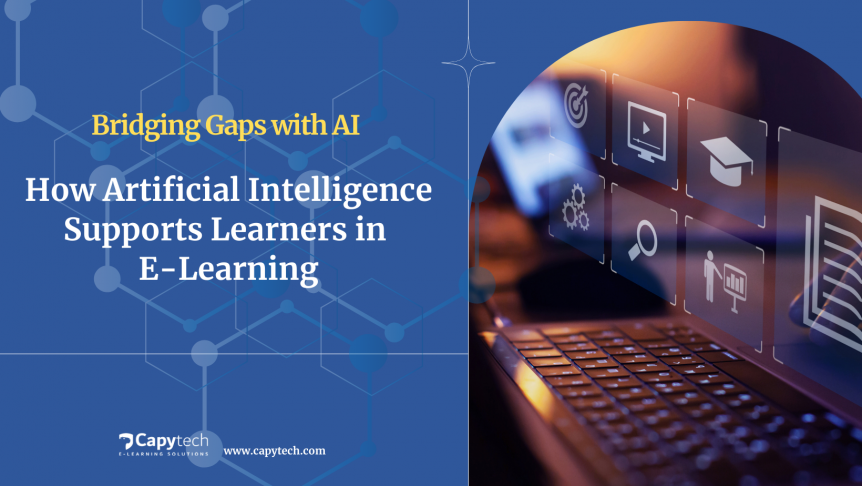Bridging Gaps with AI: How Artificial Intelligence Supports Learners in E-Learning
The digital revolution has transformed the educational landscape, introducing innovative tools and methodologies to enhance learning experiences. Among these advancements, Artificial Intelligence (AI) stands out as a pivotal player in e-learning, offering unique opportunities to personalise and streamline the educational journey. This post explores how AI is revolutionising e-learning, supporting learners by bridging gaps in access, understanding, and engagement.
Personalised Learning Pathways
One of the most significant advantages of integrating AI into e-learning is the ability to create personalised learning experiences. AI algorithms can analyse a learner’s performance, strengths, and weaknesses to tailor content, pace, and learning pathways. This approach not only respects individual learning styles but also addresses specific educational needs, making learning more efficient and effective. The introduction of AI tutors in corporate e-learning exemplifies how personalised AI-driven guidance can enhance the learner’s experience by providing real-time feedback and support.
Enhancing Accessibility
AI also plays a crucial role in breaking down barriers to education. For learners facing language challenges, AI’s capabilities in multilingual education offer a gateway to knowledge that was previously out of reach. The use of AI in breaking language barriers in tutoring demonstrates how technology can adapt educational content into multiple languages, ensuring learners worldwide can access information in their native tongue. This not only supports inclusivity but also enriches the learning environment by embracing cultural diversity.
Feedback and Assessment
Assessment and feedback are critical components of the learning process, providing learners with insights into their progress and areas for improvement. AI’s efficiency in gathering and analysing module feedback, as discussed in the context of exploring the efficiency of AI in gathering module feedback, revolutionises how educators and learners approach evaluations. Through AI, feedback becomes more timely, detailed, and actionable, enabling learners to adjust their strategies and focus on areas requiring attention.
Interactive and Immersive Learning
The integration of AI extends beyond traditional learning paradigms, paving the way for more interactive and immersive experiences. While not solely based on AI, the concept of immersive 360 learning spaces hints at the potential of combining AI with other technologies to create highly engaging and realistic educational environments. These technologies can simulate real-life scenarios, making learning more relevant and engaging for learners by placing them in the heart of the action.
Continuous Learning and Development
In the fast-paced world of technology and business, continuous learning and development are essential. AI facilitates this ongoing process by offering up-to-date content and resources tailored to the learner’s evolving needs. As industries evolve, AI-driven e-learning platforms can quickly adapt, providing learners with the latest information and skills required to stay ahead. This aspect of AI in e-learning ensures that education is not a one-time event but a lifelong journey.
Conclusion
The potential of AI in e-learning is vast and varied. By offering personalised learning experiences, enhancing accessibility, providing detailed feedback, and creating immersive learning environments, AI supports learners in unique and impactful ways. As we continue to explore and integrate AI into e-learning, we open doors to a world where education is more accessible, engaging, and effective for everyone. The journey of AI in education is just beginning, and its promise to bridge gaps in learning is an exciting prospect for educators, learners, and society as a whole.
For more insights into the role of AI in e-learning and its various applications, visit our blog for in-depth discussions and analyses.
